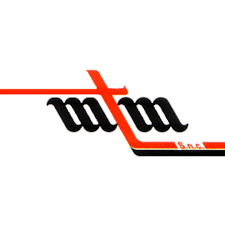Enecolab Srl
Enecolab srl was established in 2016 as an innovative startup to develop research and development activities (ATECO code 72.19.09, Experimental research and development in the field of other natural sciences and engineering), leveraging the ideas and experiences of a working group that had been consolidating over the years and shared a vision of eco-sustainability, economic sustainability, and innovation as primary drivers of development.
In 2017, the End-of-Life Boats in FRP and Thermosetting Materials project was launched, concluding in 2019, defining the GEOW technology for the energy recovery of these materials and validating its results.
In 2019 and 2020, 7 patents were obtained for the GEOW technology.
In 2020, R&D activities were expanded to other end-of-life materials and the valorization of the solid fraction of anaerobic digestion plant residues (AgriGEOW→).
In the latter part of 2021, R&D activities focused on the waste from high-pressure laminates (HPL) production, leading, in 2022, to the development of the LamiGEOW→ process: the experimental prototype plant was designed in 2023 to be operational at the beginning of 2024.
At the beginning of 2023, R&D activities were initiated on the end-of-life cycle of wind turbine blade within the framework of the community project REFRESH→.
1.- Share Capital
In capitalizing the company, the choice was made for a horizontal capital, setting a maximum limit of €40,000 for each individual participation: this choice avoids to a financial partner (who follows logic linked to the immediate remuneration of capital) from altering the vision characterizing the company.
At the basis of this choice is an ethical consideration, that is, to make the results of the economic cycle derived from the project available to a wide audience rather than concentrating it on a single entity, with the aim of building a zero-kilometer finance.
Another particularity is the shared choice of all the partners, consistent with the current legislation on start-ups, not to distribute any dividends in the first five exercises, reinvesting the profit in the R&D activities of the company.
| Year | Share capital | Overcharge | Net assets | Members Cat. A(*) | Members Cat. B(*) | Total members |
|---|---|---|---|---|---|---|
| 2016 | 200,00 | 200,00 | 2 | |||
| 2017 | 115.000,00 | 3.500,00 | 118.500,00 | 15 | ||
| 2018 | 135.000,00 | 4.500,00 | 139.500,00 | 16 | ||
| 2019 | 205.000,00 | 9.500,00 | 214.500,00 | 19 | ||
| 2020 | 271.175,03 | 131.849,97 | 403.025,00 | 21 | 28 | 49 |
| 2022 | 351.500,00 | 252.500,00 | 604.000,00 | 22 | 28 | 50 |
(*): Category A shareholders have voting rights at the assembly, Category B shareholders are entitled to dividends only.
2.- Business Model
To be able to develop its mission, the company has opted for a business model that allows it to focus on its typical R&D activity, outsourcing industrial activities.
The choice was made to entrust production to local businesses, with high competence and reliability, also by directly participating in their capital through the acquisition of shares, initiating a path of distributed factory in a win-win perspective.
This choice of intelligent specialization allows for the optimization and simplification of the company’s economic cycle, in the logic of specific high-concentration competence containers for each specific activity, autonomous from each other but coordinated by a common control room.
In 2024, industrial and commercial activities will be placed in a dedicated spin off, participated by the company.
The company mission is dedicated exclusively to the research, development, and dissemination of useful, cost-effective, and eco-sustainable technologies, particularly in the field of environmental protection and improvement, as well as alternative energy sources.
The focus is to enable a company and a territory to “exchange” waste with the energy produced from it, in a perfect example of a circular economy, reducing both disposal costs and energy supply costs.
The research activity is focused on defining specific processes for each material, resulting in an energy vector and a solid end product that can be used in other production processes, without any environmental impact from the process.
The goal is to be a point of reference in the production of energy from end-of-life materials and from non-reusable, non-recoverable, or non-recyclable waste, providing support to companies and communities in the journey towards zero waste and the establishment and development of energetic communities.











